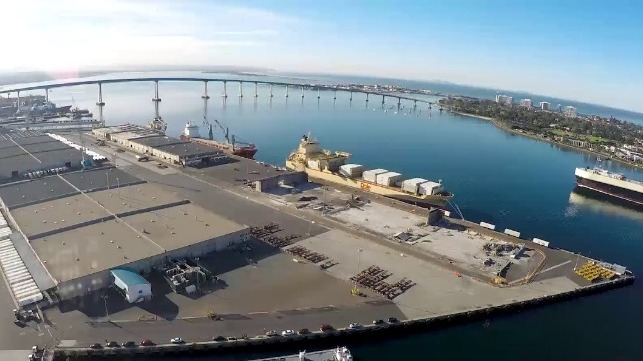Port of San Diego Moves Ahead With Solar Microgrid Project

The Port of San Diego's board of directors has given the green light for the installation of a solar-powered microgrid, battery storage system, and electrical infrastructure at the Port’s Tenth Avenue Marine Terminal (TAMT). The board has approved a planning study for the project and awarded a $2.8 million contract to EDF Renewables Distributed Solutions for the microgrid's construction.
The microgrid will provide back-up electrical power for the 96-acre multipurpose terminal, including its security infrastructure, lights, offices, and the port's jet fuel storage system. The project supports San Diego's role as one of America's 17 designated strategic commercial ports. The project also supports the redevelopment of the port's Tenth Avenue Marine Terminal, which was recently completed.
“This is a groundbreaking milestone for the Port and we are extremely proud to be on the forefront of collecting sustainable power and demonstrating energy resilience,” said Vice Chair Michael Zucchet, Port of San Diego Board of Port Commissioners. “We will soon be one of a few ports worldwide that will have a microgrid powered by renewable energy at a cargo terminal. We look forward to demonstrating a replicable model that can be used by other ports in California and around the world.”
The port says that the microgrid will increase its use of renewable energy, reducing greenhouse gas emissions at the terminal. The upcoming installation is also one of the environmental mitigation measures required for the Tenth Avenue terminal redevelopment.
The port received five proposals for the microgrid project earlier this year, and it commissioned an independent study to determine the expected energy cost savings. The port's consultants predicted that the project will result in $3.2 million in savings for the port over 20 years.
The total cost of the project is anticipated to be nearly $10 million, half of which is funded by a California Energy Commission Electric Program Investment Change (EPIC) grant. The port is contributing $4.2 million, and the University of California San Diego - a partner with the port on the project - is contributing $200,000.
